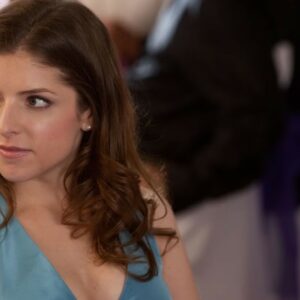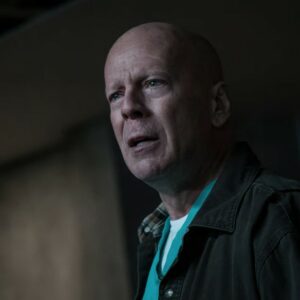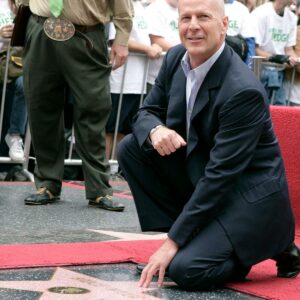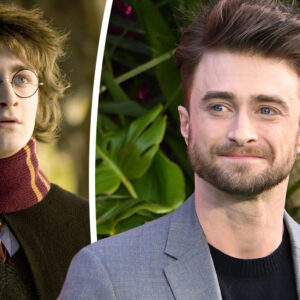Bruce Willis is one of Hollywood’s most enduring action stars, best known for his roles in films like Die Hard, The Fifth Element, and Armageddon. Over the course of his career, Willis has become synonymous with action-packed roles, often playing tough, resourceful characters caught in extraordinary situations. However, what truly sets his films apart and has solidified his status as an action legend is the seamless integration of special effects, both practical and digital, which elevate the excitement, drama, and spectacle of his movies. This article explores how special effects have played a vital role in the success of Bruce Willis’s most iconic films, examining the evolution of these technologies and how they have transformed his action roles.
The Importance of Special Effects in Bruce Willis’s Movies
When we think of Bruce Willis’s most famous roles, such as John McClane in Die Hard or Korben Dallas in The Fifth Element, we often recall scenes full of intense action sequences—explosions, high-speed chases, and larger-than-life disasters. While Willis’s acting skills, charisma, and everyman charm are essential to the appeal of these films, it is the special effects that give these moments their larger-than-life quality.
Special effects, whether practical or computer-generated, have the ability to amplify the stakes and thrill of action scenes, immersing the audience in a world that is both exhilarating and fantastical. Without the explosions, shootouts, or gravity-defying stunts enhanced by special effects, the intensity and excitement of a Bruce Willis action movie would be significantly reduced. These effects are not just mere enhancements but are often integral to the storytelling itself, pushing the boundaries of what is possible on screen and creating an emotional response in the audience.
The Evolution of Special Effects: From Practical Effects to CGI
The evolution of special effects technology has mirrored the changes in Willis’s career, evolving from the practical, in-camera techniques of the 1980s and 1990s to the cutting-edge computer-generated imagery (CGI) that is so common in modern action films. This progression has had a profound impact on the kind of action films Willis has starred in, shifting the tone and scale of the movies over time.
Practical Effects: The 1980s and 1990s
In the late 1980s and early 1990s, when Bruce Willis was first becoming an action star, most special effects were practical. These effects included things like physical explosions, pyrotechnics, stunt work, and miniatures. Films like Die Hard (1988), Willis’s breakout role, relied heavily on practical effects to create a sense of immediacy and realism. For example, the towering explosions in the Nakatomi Plaza building and the elaborate shootouts were achieved using on-set effects, where actual explosions were carefully controlled for maximum impact. There were no digital doubles or green screen backdrops—everything had to be achieved in the real world.
These practical effects were often costly and dangerous, requiring meticulous planning and coordination. But their tangible quality helped ground the film in a sense of realism. When Willis’s character, John McClane, was forced to jump off a rooftop or fight terrorists in confined spaces, the real explosions, practical stunts, and on-set props enhanced the tension and suspense, making the scenes feel more visceral.
The Advent of CGI: The Late 1990s and Beyond
As CGI technology improved in the late 1990s and early 2000s, action films began to incorporate more digital effects to create larger-than-life sequences that would have been impossible or impractical to achieve with practical effects alone. Films like The Fifth Element (1997) and Armageddon (1998) marked a shift in how special effects were used in Bruce Willis’s movies, utilizing CGI to create alien landscapes, futuristic vehicles, and explosive space disasters.
CGI allowed filmmakers to expand the scope of their stories and create visual effects that were previously limited by the laws of physics or the constraints of practical sets. In The Fifth Element, for example, the film’s fantastical world was brought to life through a blend of CGI landscapes and set designs, including the iconic flying taxis and futuristic cityscapes. Similarly, in Armageddon, CGI was used to create the massive space sequences, including the dramatic scenes where astronauts, including Willis’s character, try to prevent an asteroid from colliding with Earth.
Notable Movies and the Role of Special Effects
Bruce Willis’s career is rich with films that have pushed the boundaries of special effects, both in terms of practical techniques and CGI. Let’s take a closer look at some of his most iconic films and how special effects played a key role in their success.
Die Hard (1988)
The Die Hard franchise began with a film that remains one of the most influential action movies of all time. The 1988 original was a gritty, grounded thriller set in a high-rise building taken over by terrorists. Director John McTiernan employed a mix of practical effects and stunt work to create the explosive and intense action sequences that defined the film.
One of the most memorable sequences in Die Hard is the climactic battle between McClane and Hans Gruber (played by Alan Rickman). The scene involves Willis’s character using a fire hose to rappel down the side of the building. The high-risk stunt was a practical effect, done with a real fire hose on set. Explosions, gunfights, and the dangerous stunts McClane performs throughout the building were all achieved with practical effects.
Despite being made before the widespread use of CGI, Die Hard remains an enduring example of how practical effects can elevate the tension and excitement of an action film.
The Fifth Element (1997)
When Bruce Willis teamed up with visionary director Luc Besson for The Fifth Element, the film marked a significant departure from the grounded realism of Die Hard. This sci-fi epic is known for its bold, colorful visuals, futuristic settings, and otherworldly action sequences. To bring Besson’s vision to life, the film relied heavily on CGI and practical effects.
The world-building in The Fifth Element is extraordinary, with elaborate CGI landscapes and flying cars that have since become iconic. One of the standout visual effects in the film is the “divine light” sequence, where Leeloo (Milla Jovovich) ascends in a glow of orange light. This moment showcases the ethereal and transformative power of CGI when combined with practical effects.
In addition to CGI, The Fifth Element also employed elaborate practical sets and miniatures to create a physical sense of depth. The film’s mix of CGI and practical effects helped create a world that felt both fantastical and grounded, making it one of the most visually striking action films of the 1990s.
Armageddon (1998)
In Armageddon, Willis plays the leader of a group of oil drillers who are sent to space to stop an asteroid from destroying Earth. The film’s massive scope required the use of both practical effects and groundbreaking CGI. The space sequences, including the dramatic asteroid crash and the destruction of the space station, were achieved through CGI, while practical effects were used for the on-set scenes of the astronauts working in space and drilling into the asteroid.
One of the most memorable and emotional scenes in Armageddon is the self-sacrifice of Willis’s character, Harry Stamper, who stays behind on the asteroid to detonate the bomb and save the Earth. The emotional weight of this moment is heightened by the large-scale CGI explosion that erupts behind him, reinforcing the film’s high stakes. The CGI not only added scale to the event but also emphasized the danger and heroism of the moment.
The Role of CGI and Practical Effects in Modern Action Films
As technology has advanced, the use of CGI has become an integral part of modern action filmmaking. However, there is still a place for practical effects, especially when it comes to stunts and close-up shots. Many filmmakers and actors, including Willis, have emphasized the importance of balancing the two.
In recent years, many action films, including those in the Die Hard franchise, have relied heavily on CGI to create large-scale action scenes, from skyscraper shootouts to car chases and explosions. However, practical effects continue to play a crucial role in bringing realism and immediacy to the action. For example, in Die Hard with a Vengeance (1995), many of the film’s car chases and street shootouts were achieved with real cars and real explosions. The combination of practical effects and CGI enhances the impact of the action while maintaining a grounded sense of reality.
Conclusion: The Legacy of Special Effects in Bruce Willis’s Films
Bruce Willis’s action movie career has been defined by his iconic roles in films that blend intense character moments with jaw-dropping action sequences. Special effects, both practical and digital, have been key to making these moments memorable and elevating the excitement and drama of his films. From the gritty realism of Die Hard to the otherworldly spectacle of The Fifth Element, special effects have enabled Willis’s characters to face extraordinary challenges and accomplish feats that would be impossible in the real world.
The evolution of special effects, from practical stunts to CGI magic, has allowed Bruce Willis to continue to push the boundaries of action filmmaking. As technology continues to evolve, it’s clear that special effects will remain an essential part of the action genre. And as Willis’s legacy in cinema continues to be celebrated, it is evident that his collaboration with special effects will remain one of the defining features of his enduring career.





